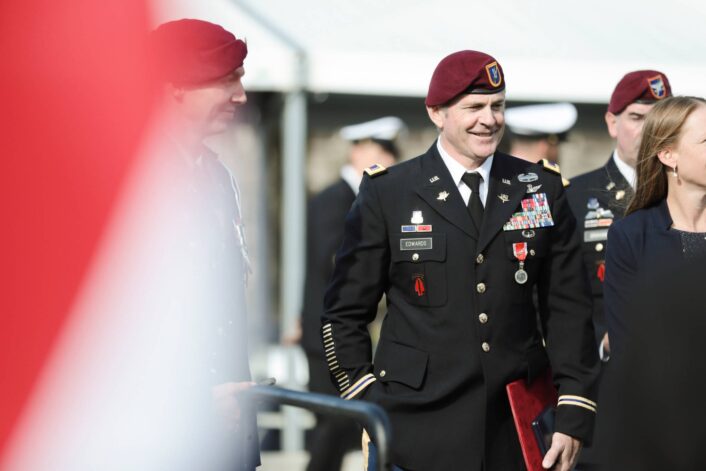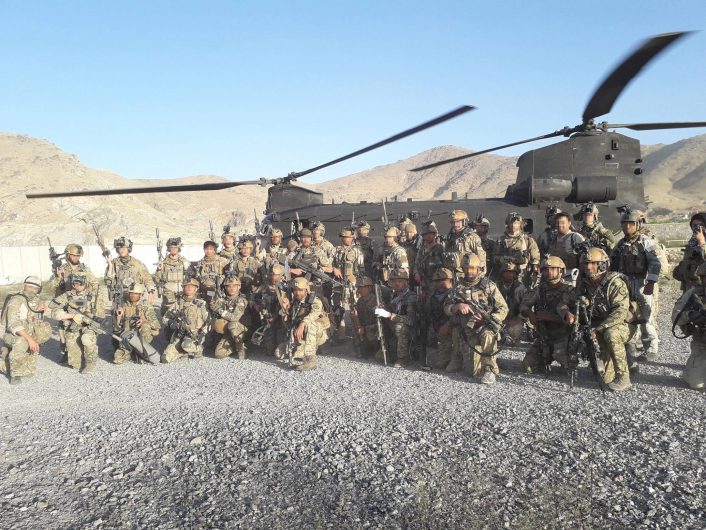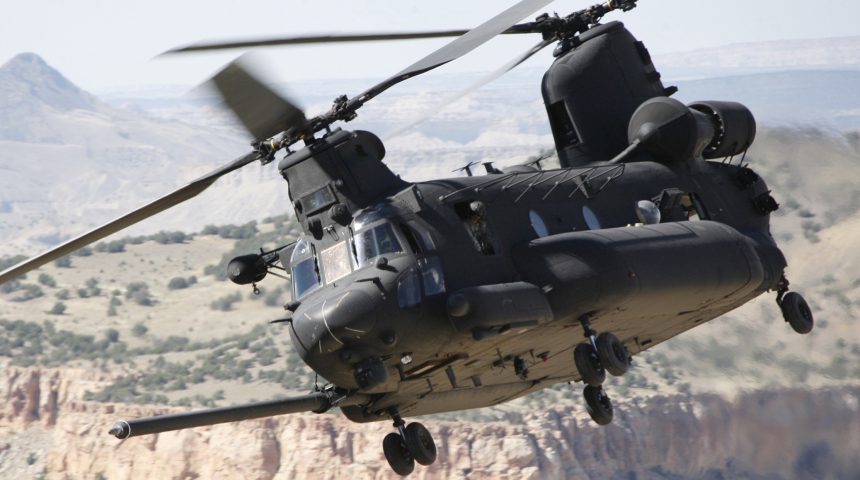The MH-47G pilot took part in rescue mission of Norwegian Special Forces in Afghanistan in 2019. He’s the first foreign recipient of a Norwegian medal since WWII.
A few days ago, as the U.S. Army 160th Special Operations Aviation Regiment (Airborne) were in the news because some of their helicopters were deployed to Kabul supporting the evacuation of stranded foreigners in Taliban-controlled areas, an MH-47G pilot of the “Night Stalkers” was being presented a medal for his courage, skill and professionalism in a very risky a mission carried out in Afghanistan two years earlier. In fact, on Aug. 27, 2021, Army pilot Brian M. Edwards, became the first foreigner to receive the Norwegian medal since WWII.
The U.S. Army 160th SOAR (A) “Night Stalkers” is a highly-specialized combat aviation unit headquartered at Ft. Campbell, Kentucky. The unit supports U.S. and coalition combat units like Army Special Forces, Naval Special Warfare (SEALs) and other special operations units conducting attack, assault, reconnaissance, infiltration and exfiltration, and any kind of known or unknown special operations you may imagine.
Here’s what we wrote about the unit when we published some rare images of the Night Stalkers training in plain daylight close to the Dam Neck Annex of Oceana Naval Air Station, Virginia.
Some details about the sortie that gave Edwards the medal were released by Norwegian MOD.

The mission took place in June 2019, in a mountain area between Bagram and Jalalabad, northeast of Kabul.
Over there, Norwegian special forces, teamed with Afghan partners, were tasked to conduct an arrest operation against a terrorist network consisting of a high-ranking Afghan leader and a large group of Western and local foreign fighters. The operation was supported by an MH-47G helicopter piloted by Edwards.
During the operation, the special forces met strong resistance: the fierce fighting lasted through the night much longer than planned. When the situation became critical, it was decided that the Norwegian forces and Afghan partners should be exfiltrated from the combat zone.
However, the pull-out positions were cut off by the way the enemy had positioned itself in the terrain forcing the MH-47G pilot to lay out an alternative plan for extraction. In a confusing situation and with fierce fighting going on, Edwards had to maneuver his helicopter and make a demanding landing.
“Some ground forces had been deployed further up the mountainside. They had an overview and command control, and were to hold their position there until we had succeeded in getting the soldiers down in the village safely out.”
Edwards also did not know if it was possible to land at all, but had been told by the ground force stationed in the village that it could be done.
“Those on the ground said that there were good chances that this could happen, so then I believed in them”
“When forces are on the ground, you just have to try to get them out. There is a great deal of mutual trust between the ground forces and us in the helicopter. We are part of a large team. Then I’m committed to getting them out. Everyone just wanted to get them out before the situation got worse.”
Edwards maneuvered the Chinook and performed a “Pinnacle Landing” or “Pinnacle Maneuver” (often seen in theaters like Iraq or Afghanistan) making the rescue possible. He lowered the ramp and kept the helicopter as stable as he could, while the special forces got on board. And while it was still being shot around them.
After 30 soldiers had boarded (bringing the total aboard to 36 – including the 6 crew members), the MH-47 would take off. “The helicopter does not like to fly when it is so overloaded. It does not have much power. We were just over the limit of how heavy it could carry under the prevailing conditions” Edwards said. But they still managed to take off and head towards safer conditions, and out of the mountain area.
When asked what he thought once everyone was on board, Edwards said: “I was relieved! For three reasons. Because we had managed to get them out. Because we had not lost the helicopter, and that it managed to take off. And so that the forces that were deployed further up the mountainside were safe.”
“This was a team effort,” Edwards comments. “I do not think what I did is heroic, It was necessary to get them out. It is a job I am honored to do”.

The “Night Stalkers” have taken part to many known as well as unknown/clandestine missions all around the world. They operate a variety of assets: the MH-47G Chinooks, MH-60L/M/K Black Hawks and A/MH-6M Little Birds, as well as the MQ-1C Gray Eagle drone, an advanced derivative of the Predator. The 160th SOAR (A) have also flown the MH-X Stealth Black Hawk (or Silent Hawk) during the Osama Bin Laden raid in 2011.
H/T to Tor-Erik Labahå for the heads-up.









